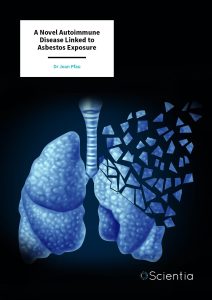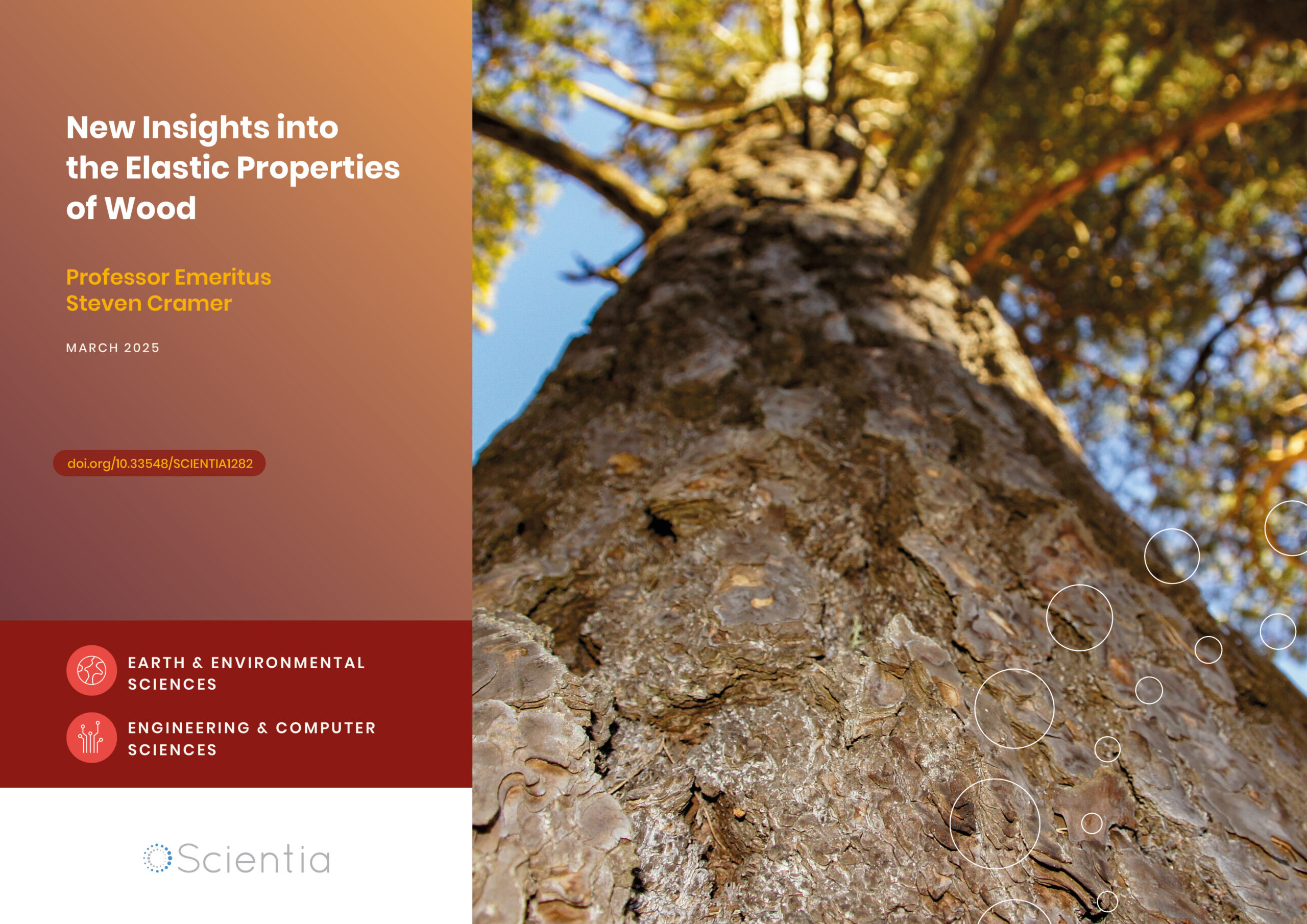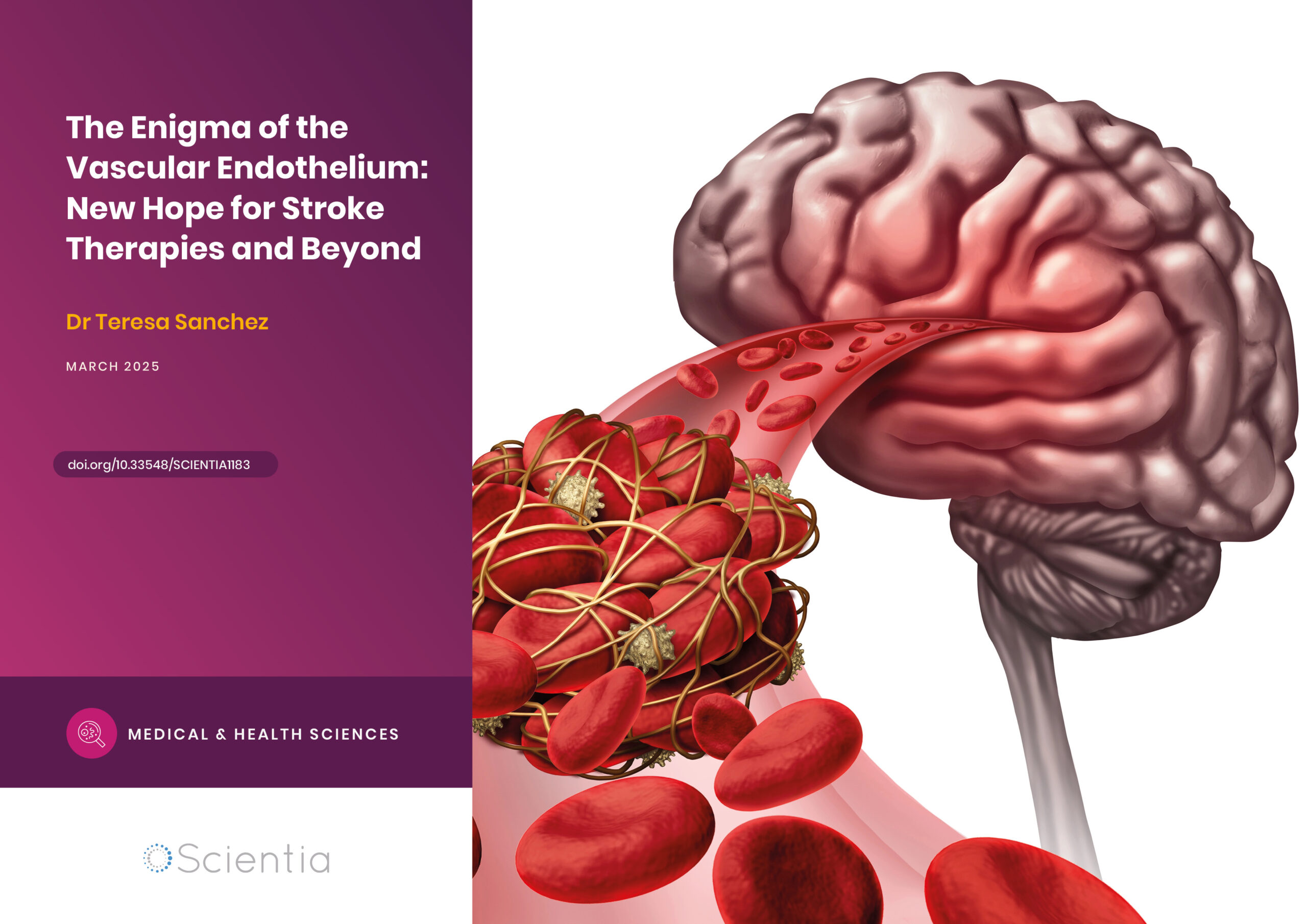Dr Jean Pfau | A Novel Autoimmune Disease Linked to Asbestos Exposure
The health hazards associated with occupational asbestos exposure are widely acknowledged and extensively studied. However, emerging evidence suggests that prolonged exposure to environmental asbestos may trigger serious and debilitating autoimmune conditions, although the mechanistic actions remain poorly understood. Dr Jean Pfau and colleagues in the Department of Microbiology and Cell Biology at Montana State University, Bozeman, USA, have discovered a novel autoimmune disease linked to a specific type of asbestos, and have conducted extensive research regarding the causes, symptoms, and progression of this deadly condition.
Environmental Asbestos and Autoimmunity
Asbestos is a fibrous mineral which has been used commercially for many years in the construction industry and the production of insulating materials. There are several types of asbestos fibres, which are classified depending on their extraction and fabrication properties. Exposure to asbestos fibres in the workplace is known to have serious health implications, including lung fibrosis and cancers. Fibrosis is characterised by the excessive production of fibrous tissues such as collagen, which gradually replaces healthy tissue with scar-like tissue and eventually interferes with functionality. The realisation of these dangers led to many countries banning the mining and use of asbestos. However, the regulated use and mining of asbestos is still permitted in several geographical regions.
Whilst the causes of asbestos-related diseases have been extensively studied in recent years, research has primarily focused on commercial fibre variations like chrysotile which are mostly encountered in occupational settings and has largely ignored the outcomes of exposure to fibres more commonly encountered in the environment, despite them possessing strikingly similar attributes and posing a risk to health at much lower levels.
Dr Jean Pfau and her esteemed team in the Department of Microbiology and Cell Biology at Montana State University, Bozeman, USA, recognise the health implications of environmental asbestos exposure and have been studying the effects of a specific type of asbestos fibre on the health of residents in the small town of Libby in Montana, with the assistance of colleagues at the Centre for Asbestos Related Diseases (CARD).
The team has discovered that the residents of Libby are prone to developing a uniquely presenting asbestos-related autoimmune condition with associated collagen thickening of the serum-producing membranes surrounding the lungs. Autoimmune conditions arise when the body elicits a response against its own cells. Dr Pfau and colleagues have endeavoured to elucidate the mechanisms of action preceding the dysfunctional immune response in Libby residents and identify immunological factors that may be predictive of the potential progression and severity of the disease.

Mineral asbestos
Libby: An Environmental Catastrophe
Until the late 1980s, a mine near Libby was the USA’s most prolific producer of vermiculite, a mineral used in the construction, motor, and insulation industries and for germinating and growing seeds. Unbeknownst to the miners, the mineral was contaminated with the needle-like fibres of amphibole (since termed Libby Asbestiform Amphiboles or LAA), and subsequently, residents of the town were exposed to the damaging effects of asbestos for decades via dust, waste products, and playground surfaces. The contaminated mineral was also used to insulate homes, and families were made further vulnerable to exposure via the transfer of fibres on the clothes of returning mine workers. Moreover, the vermiculite was transported and used throughout the country, potentially spreading the asbestos contamination to many more communities. Years later, this exposure was associated with profound health problems in Libby residents, including respiratory and systemic autoimmune diseases (SAID).
Contradictory to recognised asbestos exposure diseases, a deadly and progressive inflammatory fibrotic lung condition was emerging in Libby residents, eventually named Lamellar Pleural Thickening, or ‘Libby Disease’. Simultaneously, systemic autoimmune diseases such as lupus and rheumatoid arthritis were occurring more frequently within this population, along with a high frequency of autoantibodies directed against the nucleus of the cell, so-called antinuclear autoantibodies. Taken together, this provoked the notion that LAA may elicit an autoimmune response within exposed individuals and suggested that this altered response may lead to Libby Disease.

Autoantibodies and Disease Outcomes
To this end, Dr Pfau and her team proceeded to investigate whether autoantibodies were able to induce collagen production in serum-producing membranes. Having designed a mouse model to mimic lung tissue and using established laboratory techniques, including cell culture and fluorescence microscopy, the researchers confirmed that certain autoantibodies were indeed present in serum after LAA exposure which were absent in non-exposed counterparts. Simulating an ongoing immune response, the researchers also found that collagen production was significantly higher in the presence of autoantibodies. These findings supported the idea that exposure to LAA induced the production of autoantibodies, and that these exacerbated the fibrotic process via excessive collagen deposits.
Attempting to better understand the increased risk of SAID and to characterise the complex clinical nature of autoimmune outcomes related to LAA exposure, Dr Pfau and colleagues selected several cases from the Libby Epidemiology Research Programme for review. They proceeded to determine the breadth of rheumatological conditions manifesting in Libby residents, and to build a profile of the medical histories of LAA-exposed individuals.
The team found that the prevalence of some SAID, including rheumatoid arthritis and lupus, were considerably elevated when compared to the levels expected in the general population of the USA. However, levels of other non-SAID were not different in Libby residents, suggesting that LAA exposure was indeed responsible in some way for the increased risk of SAID and that the specific lung tissue thickening seen in Libby patients was more likely due to LAA exposure than SAID.
Importantly, many of the rheumatological conditions occurring in the Libby cohort were misdiagnosed owing to the unusual combination of diseases or a failure to meet current diagnostic criteria. The symptoms recurring in these patients included extreme chronic fatigue, Raynaud’s phenomenon, rashes, swollen painful joints, and musculoskeletal pain, as well as the lamellar pleural thickening now recognised as Libby Disease.
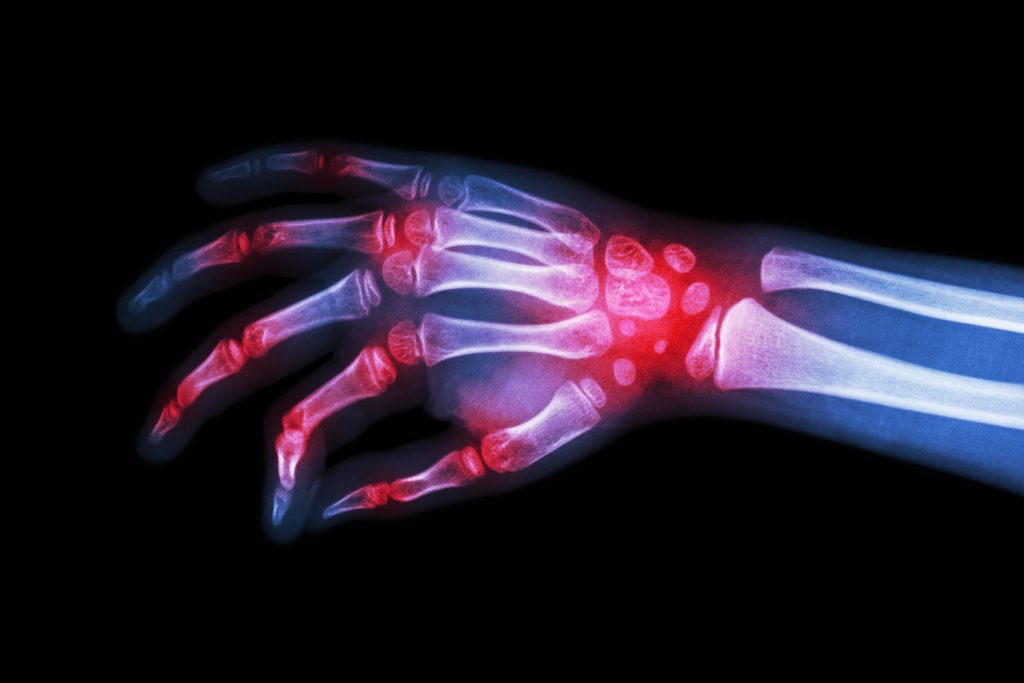
Immunological Markers for Progressive Disease
General asbestos immunotoxicity usually begins with inflammation, and it is thought that the related autoimmune response is triggered following the activation of various cells of the immune system. Similarly, the effects of asbestos in cell culture and mouse models have been reported as increased DNA damage and programmed cell death. Such early events and cellular interactions may be responsible for the eventual disease outcomes and may be dependent upon the size and composition of mineral fibres. It is clear that many Libby residents have complicated clinical profiles, which pose real challenges for diagnostics and treatment planning, and for this reason, a firm diagnosis may not be reached for several years.
Progressive Libby Disease is characterised by painful scarring and reduced functionality of the lung tissue. Due to these unique manifestations, Dr Pfau and colleagues proceeded to investigate and identify whether any immunological factors were specifically associated with the condition, and which might be useful markers of disease progression and/or severity.
The team conducted experiments using data and serum from those patients at the CARD who met the study criteria. Patients were compared according to their Libby Disease status. The team discovered several interesting immunological traits exclusively associated with progressive Libby Disease, including a significantly higher incidence of particular autoantibodies and increased collagen production. The team predict that this information may aid in the development of combined autoantibody-based screening programmes and highlight novel therapeutic pathways to facilitate early detection and treatment of progressive disease.

Continuing the Mission
Dr Pfau and team describe a novel autoimmune disease exclusively detected in LAA-exposed individuals and have elucidated a potential mechanism of action via increased collagen production, which may also be applicable to other fibrotic diseases. It is apparent that more than one autoimmune disease is associated with LAA exposure, representing a plethora of painful inflammatory conditions and an increased susceptibility to connective tissue disorders. More research is necessary to further characterise this fascinating relationship, and with the team currently working on identifying precise protein targets for LAA-specific autoantibodies, a better understanding of the nature of this devastating disease may soon emerge.
Further work is warranted in order to unravel the mechanisms behind the alterations of self-peptides which lead to the production of autoantibodies, and to increase our understanding of the unusual combinations and temporal alterations frequently observed in Libby residents. This may shed light on potential anti-inflammatory therapies which could aid in mitigating the progression and severity of the disease, to replace the current treatment options, which mainly rely on pain management.
There is no doubt that environmental exposure to asbestos is an urgent public health matter, and the devastating effects which are still experienced to this day in Libby are a grim reminder of the ongoing dangers that this phenomenon poses. There remains a need to raise awareness amongst clinicians working with autoimmune and general inflammatory diseases so that LAA exposure may be recognised at an earlier stage and considered as a possible cause, particularly since it is highly unlikely that this issue remains confined to the Libby area since millions of homes and buildings remain insulated with the material.
The influential research conducted by Dr Pfau and her resolute team will prove invaluable in increasing awareness and education around this terrible affliction, leading to much-needed attention to attract the funding required to continue this vital mission.
SHARE
DOWNLOAD E-BOOK
REFERENCE
https://doi.org/10.33548/SCIENTIA921
MEET THE RESEARCHER
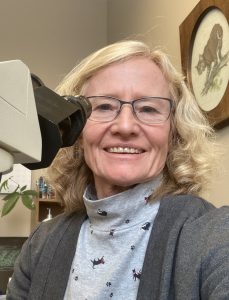
Dr Jean Pfau
Montana State University
Bozeman, MT
USA
Dr Jean Pfau received her PhD in Microbiology and Biochemistry from the University of Montana, and has since held several senior positions in highly regarded institutes across the USA. Currently partially retired from Montana State University, Dr Pfau teaches graduate courses in Physiology as well as sitting on several committees and advisory boards. Dr Pfau’s research is focused on inflammatory and autoimmune diseases and their environmental triggers, with a particular focus on asbestos exposure in Libby, MT. Indeed, she continues to serve as a consultant with the Centre for Asbestos Related Diseases situated in Libby. Dr Pfau is the recipient of numerous prestigious awards for her contributions to science and also her community outreach and education activities. She has published nearly 60 peer-reviewed papers and has collaborated with distinguished researchers across the world.
CONTACT
W: http://www.montana.edu/immtoxlab/
KEY COLLABORATORS
Dr Tracy McNew, Centre for Asbestos Related Diseases, Libby, Montana
Dr Brad Black, Center for Asbestos Related Disease, Libby, Montana
Dr Kinta Serve, Idaho State University, Pocatello ID
Dr Raja Flores, Mt Sinai School of Medicine, New York
Dr Hassina Mouri, University of Johannesburg, South Africa
FUNDING
National Institutes of Health Grant
Libby Epidemiology Research Program
Agency for Toxic Substances and Disease Registry
Community/Academic Partnership Award (Institute of Translational Health Sciences)
FURTHER READING
JC Pfau, T McNew, L Swan, B Black, Autoimmune Markers for Progression of Libby Amphibole Lamellar Pleural Thickening, Inhalation Toxicology, 2019, 31, 409–419. DOI: https://doi.org/10.1080/08958378.2019.1699616
B Black, J Szeinuk, AC Whitehouse, SM Levin, et al., Rapid progression of pleural disease due to exposure to Libby amphibole: “Not your grandfather’s asbestos related disease”, American Journal of Industrial Medicine, 2014, 57, 1197–1206. DOI: https://doi.org/10.1002/ajim.22330
JC Pfau, KM Serve, CW Noonan, Autoimmunity and asbestos exposure, Autoimmune Disorders, 2014, 782045. DOI: https://doi.org/10.1155/2014/782045
CN Zebedeo, C Davis, C Pena, et al., Erionite induces production of autoantibodies and IL-17 in C57BL/6 mice, Toxicology and Applied Pharmacology, 2014, 275, 257–264. DOI: https://doi.org/10.1016/j.taap.2014.01.018
LS Marchand, S St-Hilaire, EA Putnam, et al., Mesothelial cell and antinuclear autoantibodies associated with pleural abnormalities in an asbestos exposed population of Libby MT, Toxicology Letters, 2012, 208, 168–173. DOI: https://doi.org/10.1016/j.toxlet.2011.10.024

REPUBLISH OUR ARTICLES
We encourage all formats of sharing and republishing of our articles. Whether you want to host on your website, publication or blog, we welcome this. Find out more
Creative Commons Licence (CC BY 4.0)
This work is licensed under a Creative Commons Attribution 4.0 International License. 
What does this mean?
Share: You can copy and redistribute the material in any medium or format
Adapt: You can change, and build upon the material for any purpose, even commercially.
Credit: You must give appropriate credit, provide a link to the license, and indicate if changes were made.
SUBSCRIBE NOW
Follow Us
MORE ARTICLES YOU MAY LIKE
Dr Wilber Sabiiti | Battling Tuberculosis whilst Maintaining the Respiratory Microbiome
In the world of respiratory health, treating tuberculosis infections is an ongoing challenge. Dr Wilber Sabiiti from the University of St Andrews in the UK, delves into the impact of various tuberculosis treatments on the intricate community of microorganisms residing in the respiratory tract. He explores the impact of seven different treatment regimens and their effects on the microbiome, which is crucial for maintaining respiratory health and well-being.
Proteins on the Move: Gateways into Mitochondria
Eukaryotic translation initiation factor 5A (eIF5A) is an essential translation factor found in nearly all living organisms. It helps ribosomes, the molecular machines that build proteins, in translating proteins containing specific amino acids. The lack of eIF5A is related to various diseases as well as ageing. Although eIF5A is known to be essential for mitochondrial function, the specific mechanism linking them has not yet been described. Professor Paula Alepuz and former PhD student Marina Barba-Aliaga (University of Valencia) work with Professor Brian M Zid (University of California San Diego) to investigate the fascinating world of eIF5A activity and its connection to mitochondria.
Professor Emeritus Steven Cramer | New Insights into the Elastic Properties of Wood
Wood has been used for centuries to make various structures. However, its properties are typically considered on a large scale and assumed to be consistent. This oversimplification can lead to unexpected variations in product performance and less than optimal utilisation of the timber resource. Examination of the intricate structure of pine trees’ growth rings formed during the annual growing season provides a chance to determine if wood’s properties are as consistent as commonly assumed and, if not, why not. Professor Emeritus Steven Cramer of the University of Wisconsin-Madison has investigated the differences in properties between wood types that comprise the growth rings of loblolly pine trees.
Dr Teresa Sanchez | The Enigma of the Vascular Endothelium: New Hope for Stroke Therapies and Beyond
The landscape of work is undergoing a radical transformation, with flexible arrangements and remote working becoming increasingly embedded in organisational culture. However, for the estimated 15-20% of people who are neurodivergent – including those with Autism Spectrum Disorder (ASD), Attention-Deficit Hyperactivity Disorder (ADHD), dyslexia, and other cognitive differences – navigating the workplace can present unique and sometimes overwhelming challenges. Researchers at the University of Bath have conducted the largest UK study of its kind, exploring how flexible working practices can support neurodivergent employees in the workplace, revealing both challenges and opportunities for creating more inclusive work environments.

